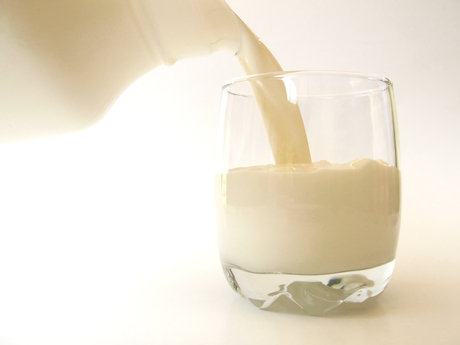What a sound idea: large-scale acoustic separation of milk fat

Australian researchers have demonstrated milk fat separation using ultrasonics as the separation technique on a large scale for the first time.
Using ultrasonic standing waves, a technique once limited to small-scale settings, Swinburne University of Technology and CSIRO scientists have jointly demonstrated cream separation from natural whole milk at litre scales for the first time. This fast and non-destructive separation technique has potential industrial dairy applications.
The researchers reported the key design and effective operating parameters for milk fat separation in batch and continuous systems at the 169th Meeting of the Acoustical Society of America (ASA).
The project, co-funded by the Geoffrey-Gardiner Dairy Foundation and the Australian Research Council, has established a proven ultrasound technique to separate fat globules from milk with high volume throughputs up to 30 L/h, opening doors for processing dairy and biomedical particulates on an industrial scale.
“We have successfully established operating conditions and design limitations for the separation of fat from natural whole milk in an ultrasonic litre-scale system,” said Thomas Leong, an ultrasound engineer and a postdoctoral researcher from the Faculty of Science, Engineering and Technology at the Swinburne University of Technology. “By tuning system parameters according to acoustic fundamentals, the technique can be used to specifically select milk fat globules of different sizes in the collected fractions, achieving fractionation outcomes desired for a particular dairy product.”
The ultrasonic separation technique
According to Leong, when a sound wave is reflected on itself, the reflected wave can superimpose over the original waves to form an acoustic standing wave. Such waves are characterised by regions of minimum local pressure, where destructive interference occurs at pressure nodes, and regions of high local pressure, where constructive superimposition occurs at pressure antinodes.
When an acoustic standing wave field is sustained in a liquid containing particles, the wave will interact with particles and produce what is known as the primary acoustic radiation force. This force acts on the particles, causing them to move towards either the node or antinode of the standing wave, depending on their density. Positioned thus, the individual particles will then rapidly aggregate into larger entities at the nodes or antinodes.
To date, ultrasonic separation has been mostly applied to small-scale settings, such as microfluidic devices for biomedical applications. Few demonstrations are on volume scale relevant to industrial application, due to the attenuation of acoustic radiation forces over large distances.
Acoustic separation of milk fat globules at litre scales
To remedy this, Leong and his colleagues have designed a system consisting of two fully submersible plate transducers placed on either end of a length-tunable, rectangular reaction vessel that can hold up to two litres of milk.
For single-plate operation, one of the plates produces one- or two-megahertz ultrasound waves, while the other plate acts as a reflector. For dual-plate operation, both plates were switched on simultaneously, providing greater power to the system and increasing the acoustic radiation forces sustained.
To establish the optimal operation conditions, the researchers tested various design parameters such as power input level, process time, transducer-reflector distance and single or dual transducer set-ups etc.
They found that ultrasound separation makes the top streams of the milk contain a greater concentration of large fat globules (cream) and the bottom streams more small fat globules (skimmed milk), compared to conventional methods.
“These streams can be further fractionated to obtain smaller and larger sized fat globules, which can be used to produce novel dairy products with enhanced properties,” Leong said, as dairy studies suggested that cheeses made from milk with a higher portion of small fat globules have superior taste and texture, while milk or cream with more large fat globules can lead to tastier butter.
Leong said the ultrasonic separation process only takes about 10 to 20 minutes on a litre scale - much faster than traditional methods of natural fat sedimentation and buoyancy processing, commonly used today for the manufacture of Parmesan cheeses in Northern Italy, which can take more than six hours.
The researchers’ next step is to work with small cheesemakers to demonstrate the efficacy of the technique in cheese production.
Kokumi chemistry for rich-tasting sparkling wines
Kokumi compounds can bring a richness of flavour to foods like cheese, but now scientists have...
From cream to clean: ice cream maker implements organic wastewater solution
An ice cream manufacturer transitioned from traditional aluminium-based coagulants to a...
Maximising yield and minimising waste in dairy processing
Rockwell Automation Model Predictive Control technology is designed to optimise dairy processes...











